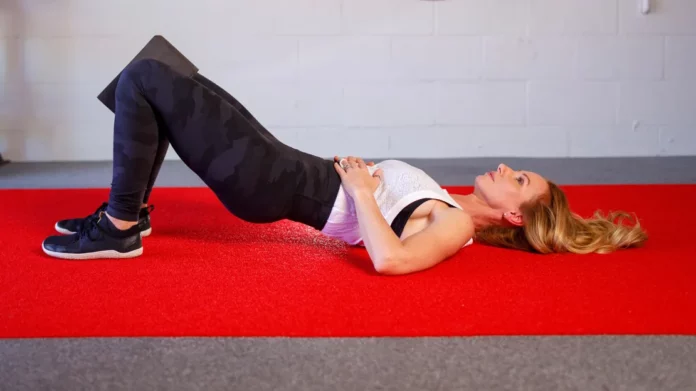In the realm of fitness culture, it’s been widely accepted that stretching for greater flexibility is the key to enhancing movement and preventing injuries.
But what if I told you that the path to improved mobility isn’t solely about stretching?
Through my experience as a mobility coach in professional sports, I’ve come to understand that achieving healthy movement involves a multifaceted approach tailored to the specific needs of your body. And contrary to popular belief, simply increasing flexibility isn’t always the answer.
The Stretching Misconception Flexibility is undoubtedly important, yet it’s just one piece of the puzzle when it comes to optimizing joint function. Joints provide the basis for movement by enabling a range of motion, while muscles lend support to these movements. Since functional joints require both mobility and stability, muscles must strike a balance between flexibility and strength to adequately support joints.
However, there’s a prevailing notion that flexibility alone signifies joint health. Consequently, many individuals prioritize stretching over strengthening, as it’s perceived as an easier and more pleasant endeavor.
Regrettably, this skewed focus can lead to issues like joint instability, chronic pain, and an elevated risk of injury. Furthermore, because stretching is often seen as a universal remedy for discomfort, people may unknowingly exacerbate their problems by stretching excessively in attempts to alleviate pain caused by their own overstretching.
How Stretching Can Backfire In cases where joints are unstable due to factors such as injury, hypermobility, or misalignment, the body compensates by tightening surrounding muscles to provide additional support. This mechanism, known as protective tension, prevents the joint from moving beyond its safe range.
If one fails to recognize this protective tension and attempts to alleviate it through stretching, the body responds by increasing the tension further. Aggressive stretching against protective tension can even destabilize the joint and heighten the risk of injury.
When Stretching Isn’t the Solution Before resorting to stretching as a quick fix for muscle tension, it’s crucial to understand the underlying cause of your discomfort. By doing so, you can identify whether stretching is truly advisable or not.
In such evaluations, it’s important to consider unique circumstances like pregnancy, which can alter joint laxity due to hormonal changes. Additionally, certain medications may contribute to joint and muscle pain.
If uncertainty persists regarding the advisability of stretching, consulting a doctor or physical therapist can provide valuable insights tailored to your specific situation.
An Example: Tight Hamstrings When muscles feel tense, the immediate assumption is that they are shortened and tight, warranting stretching as a remedy. However, the reality is often more intricate. Take, for instance, the common issue of tight hamstrings encountered in my work with athletes.
In a majority of cases, tight hamstrings are not a result of being short and tight, but rather due to an anterior pelvic tilt, where the pelvis is tilted forward. This pelvic tilt elongates and inhibits the hamstrings, causing them to feel tense and immobile.
While stretching may seem like the logical solution, attempting to stretch already lengthened hamstrings can lead to tears, strains, and further destabilization of the pelvis. Instead, exercises that promote alignment and stability are more effective.
The Breathing Bridge Exercise One such exercise is the breathing bridge, which aims to restore pelvic position by strengthening the core and glutes while releasing tension in the hip flexors and low back. In this exercise, the hamstrings are actively engaged but in a way that doesn’t exacerbate their lengthened state.
Here’s how to perform the breathing bridge:
- Lie on your back with knees bent and feet hip-distance apart, holding a foam yoga block or rolled towel between your knees.
- Place your hands on your lower ribs to monitor their movement with each breath.
- Exhale fully, drawing your lower ribs together and tucking your tailbone under to lift your hips off the floor, maintaining a posterior pelvic tilt.
- Hold the position for five deep breaths, focusing on engaging your core and glutes to prevent anterior pelvic tilt.
Benefiting from Stretching: A Balanced Approach Stretching undoubtedly has its merits and should be incorporated into a well-rounded fitness routine that also includes strength training. However, it’s important to strike a balance between strength and flexibility for optimal joint health.
Dynamic stretching, characterized by stretches held for less than 30 seconds, is particularly beneficial as a warm-up before activities. Conversely, longer-held static stretches are better suited for cooldowns or recovery days.
When addressing specific issues, such as low back pain, a combination of stretching and strengthening often yields the best results. Exercises like the breathing bridge provide a blend of both strengthening and lengthening benefits.
In conclusion, while stretching can feel good and offer relief, it’s essential to approach it with caution and understanding. By recognizing the interplay between strength and flexibility and tailoring your approach accordingly, you can avoid unnecessary pain and injury, ultimately allowing you to move and feel your best.
